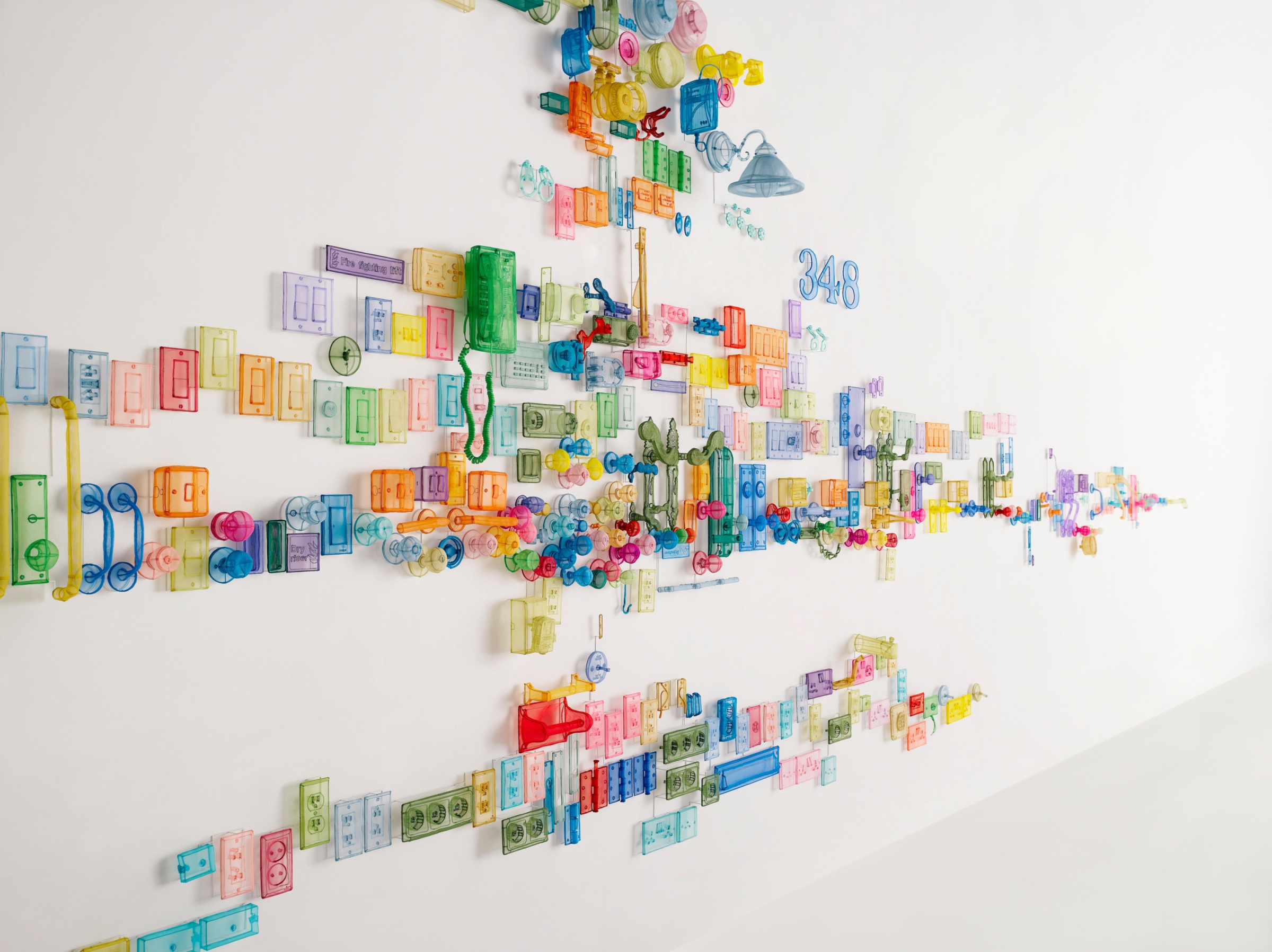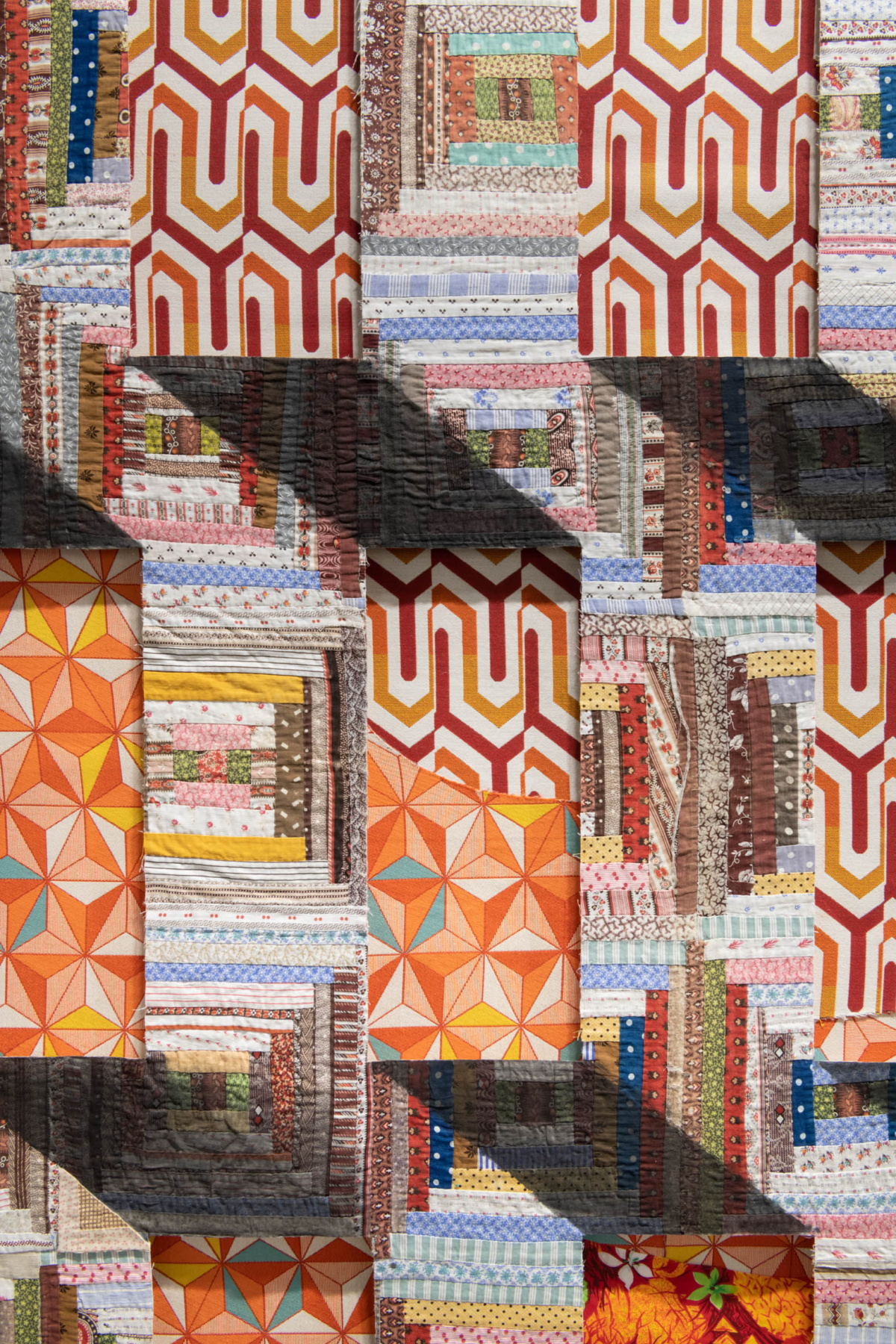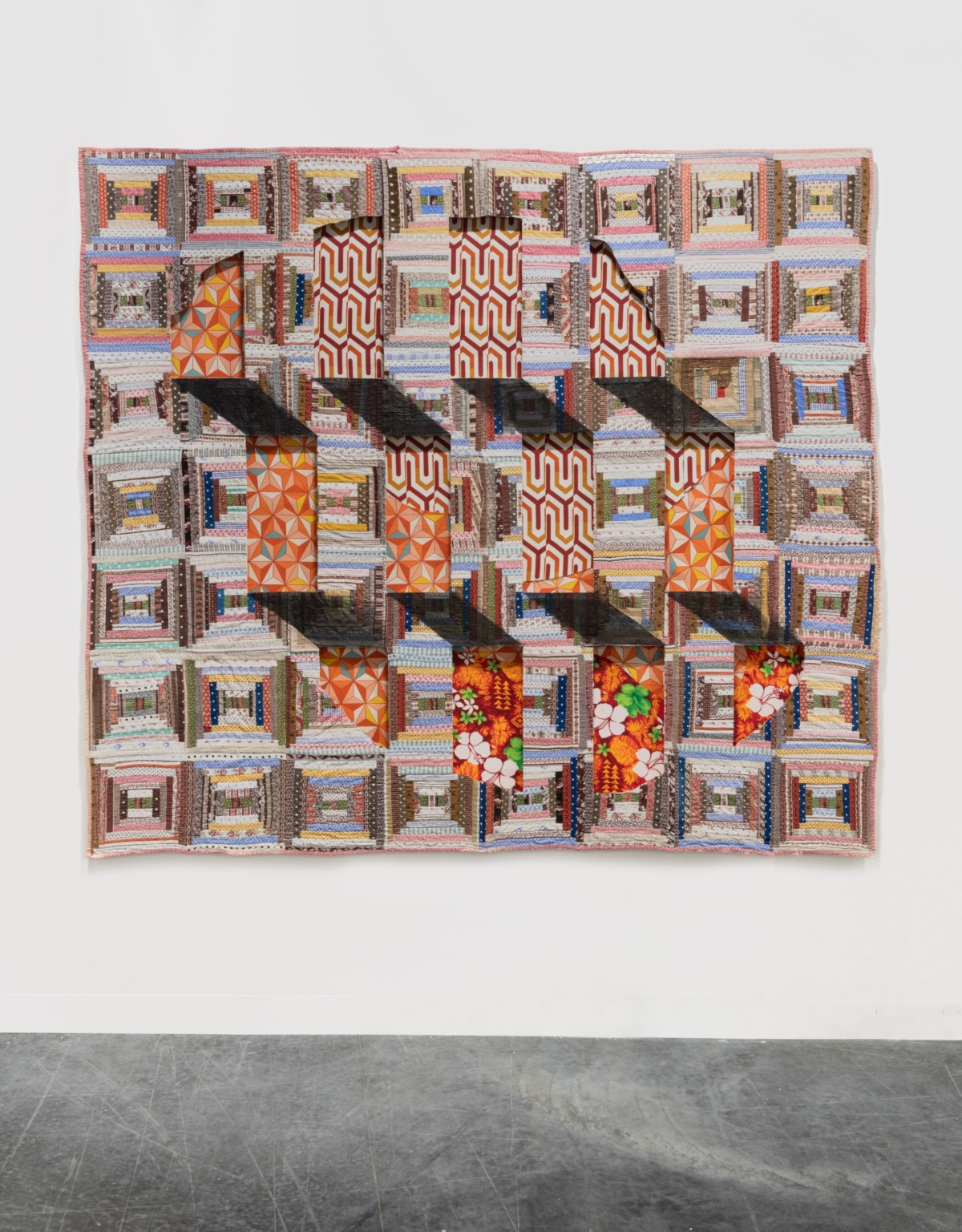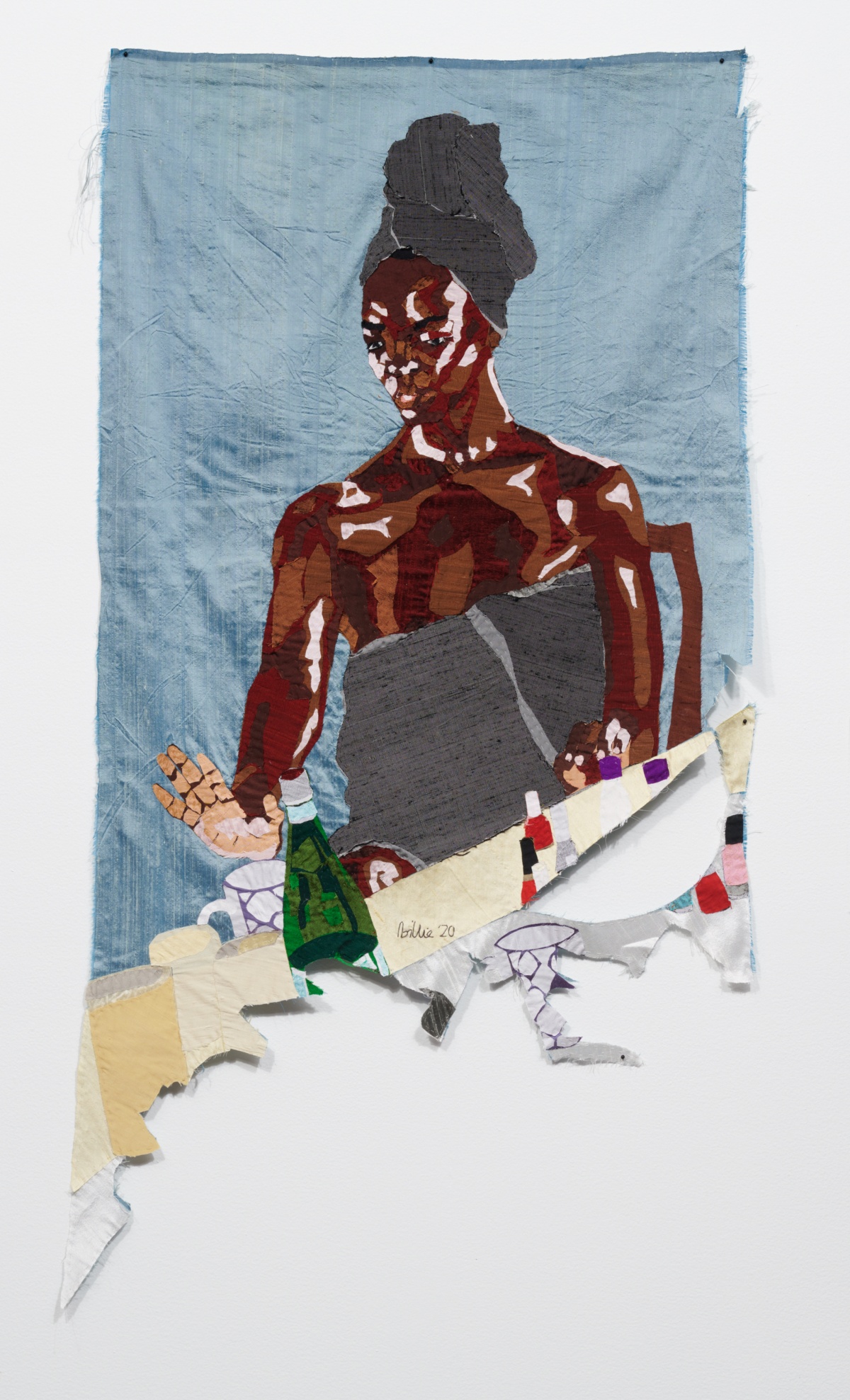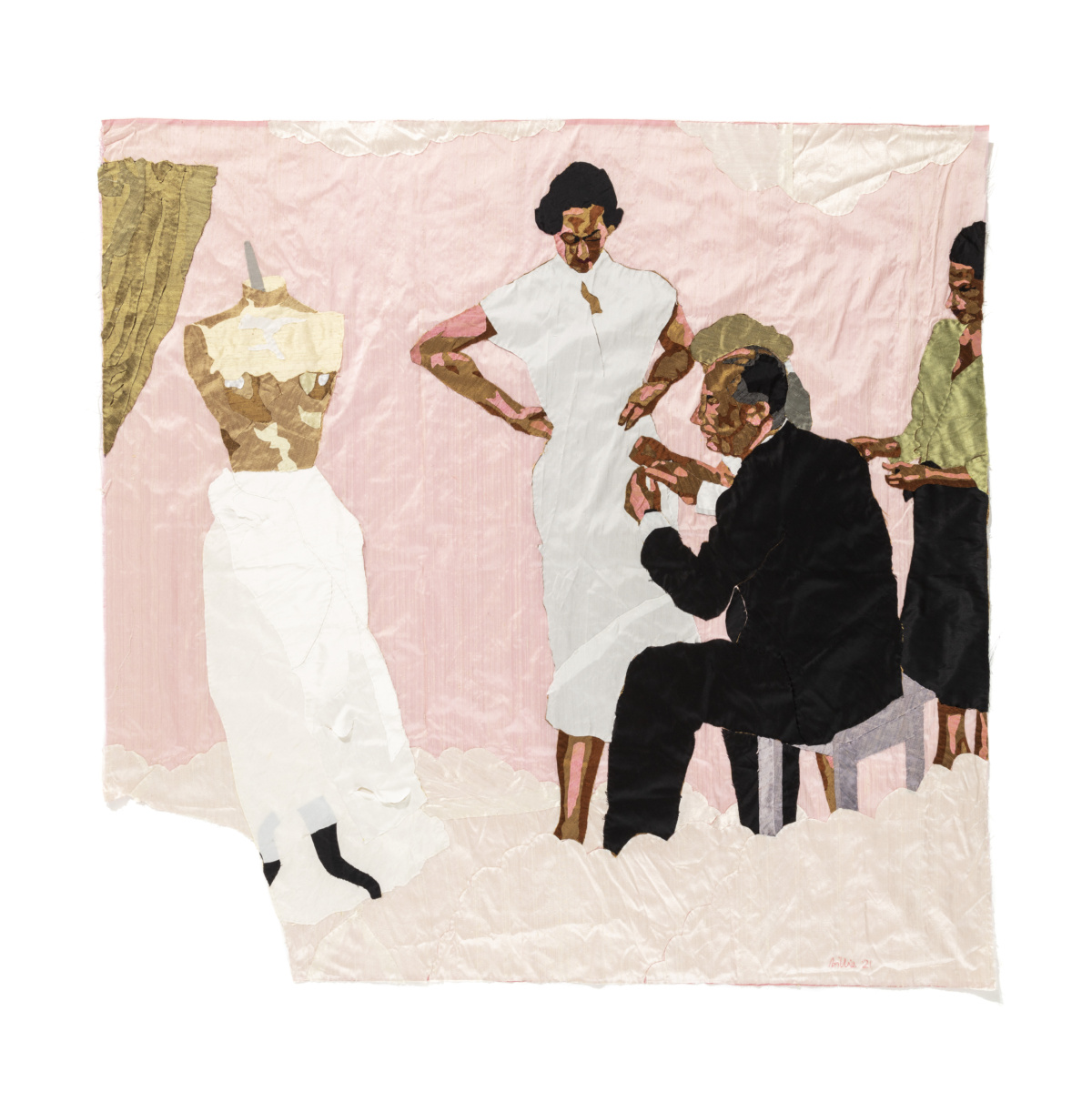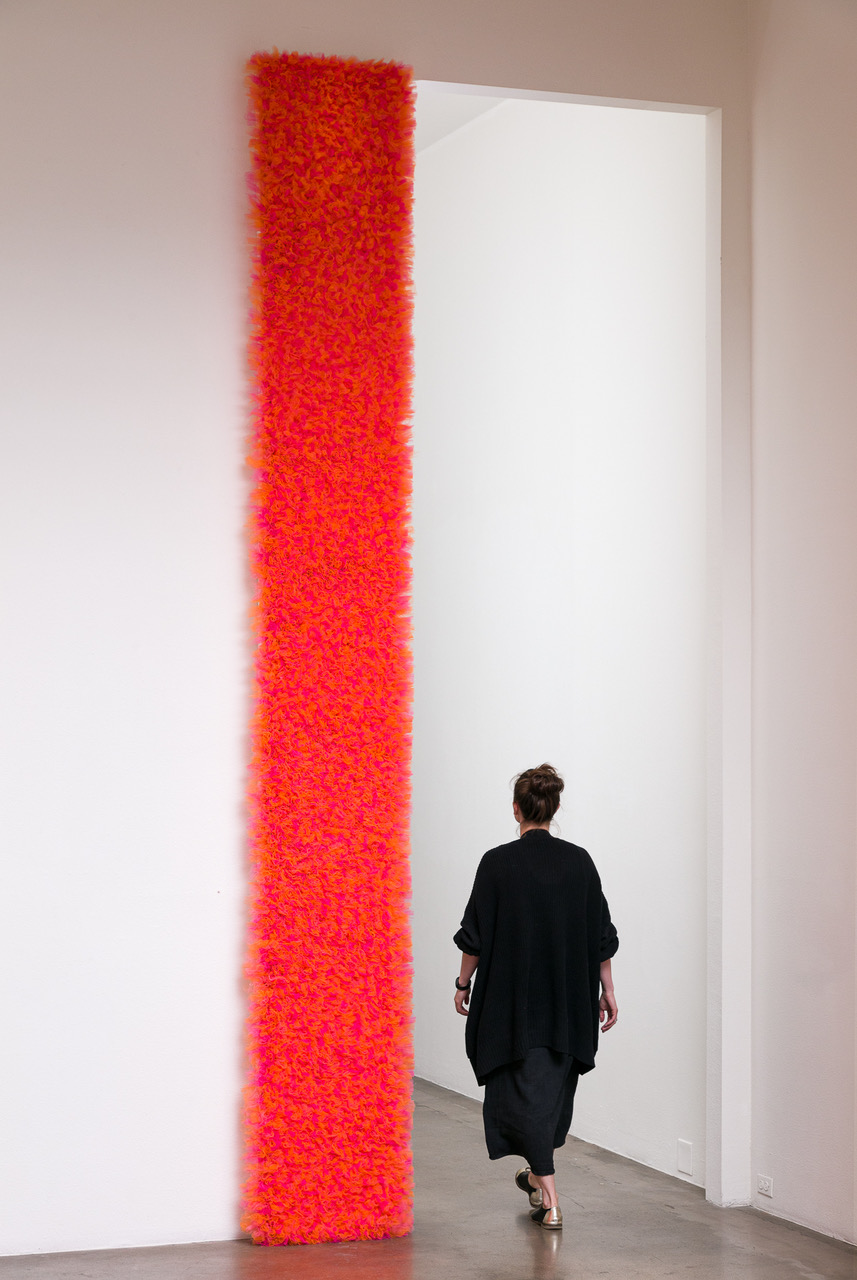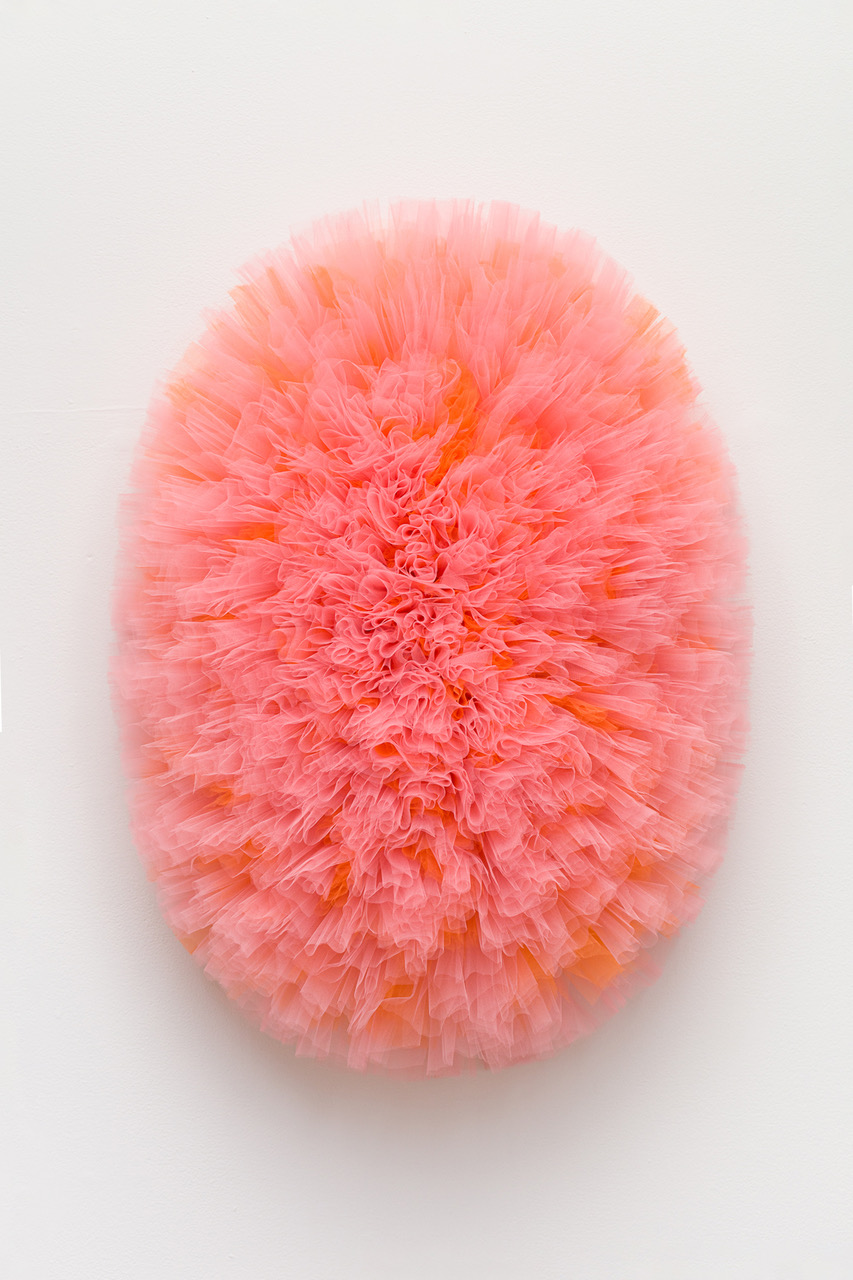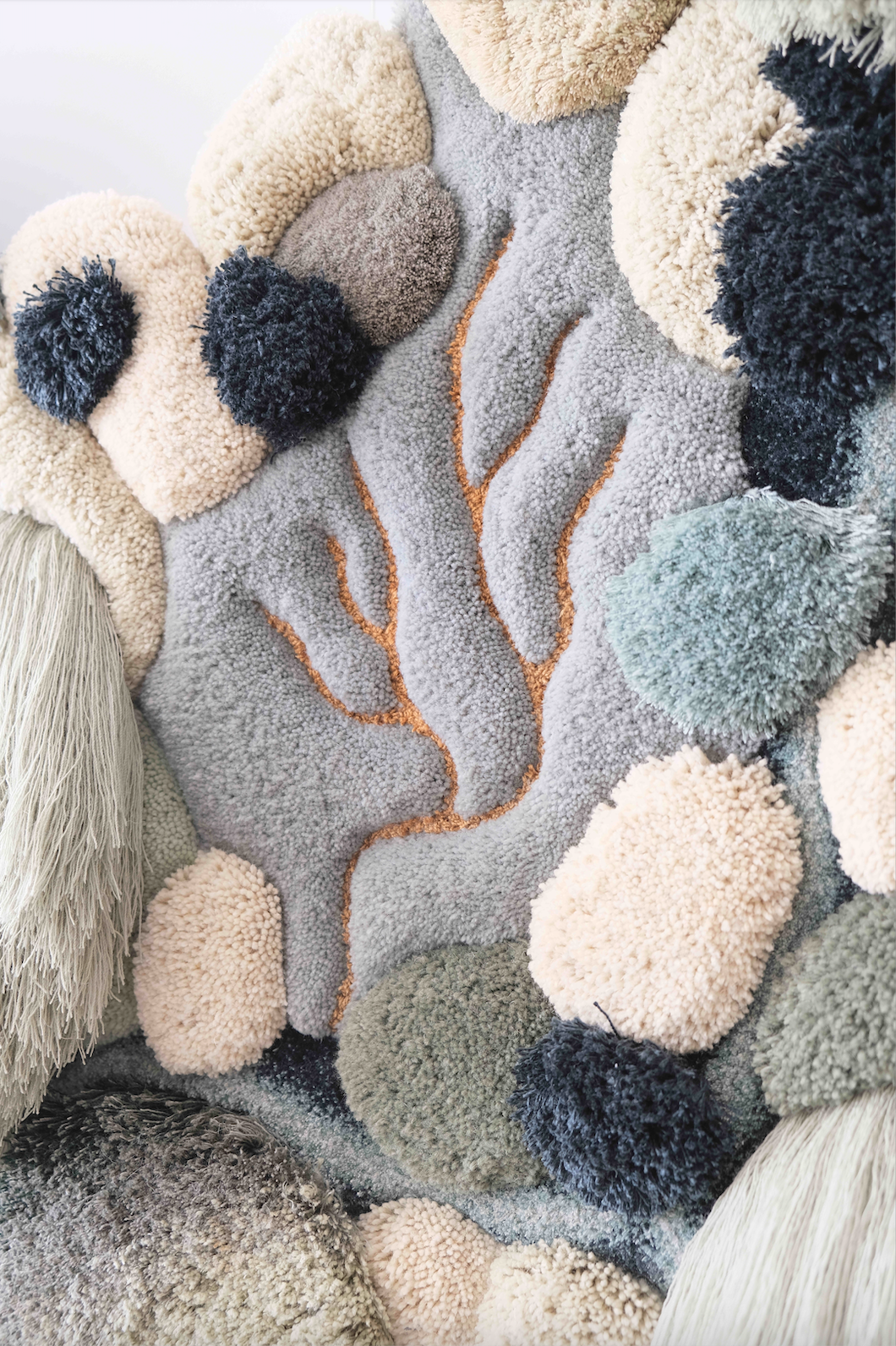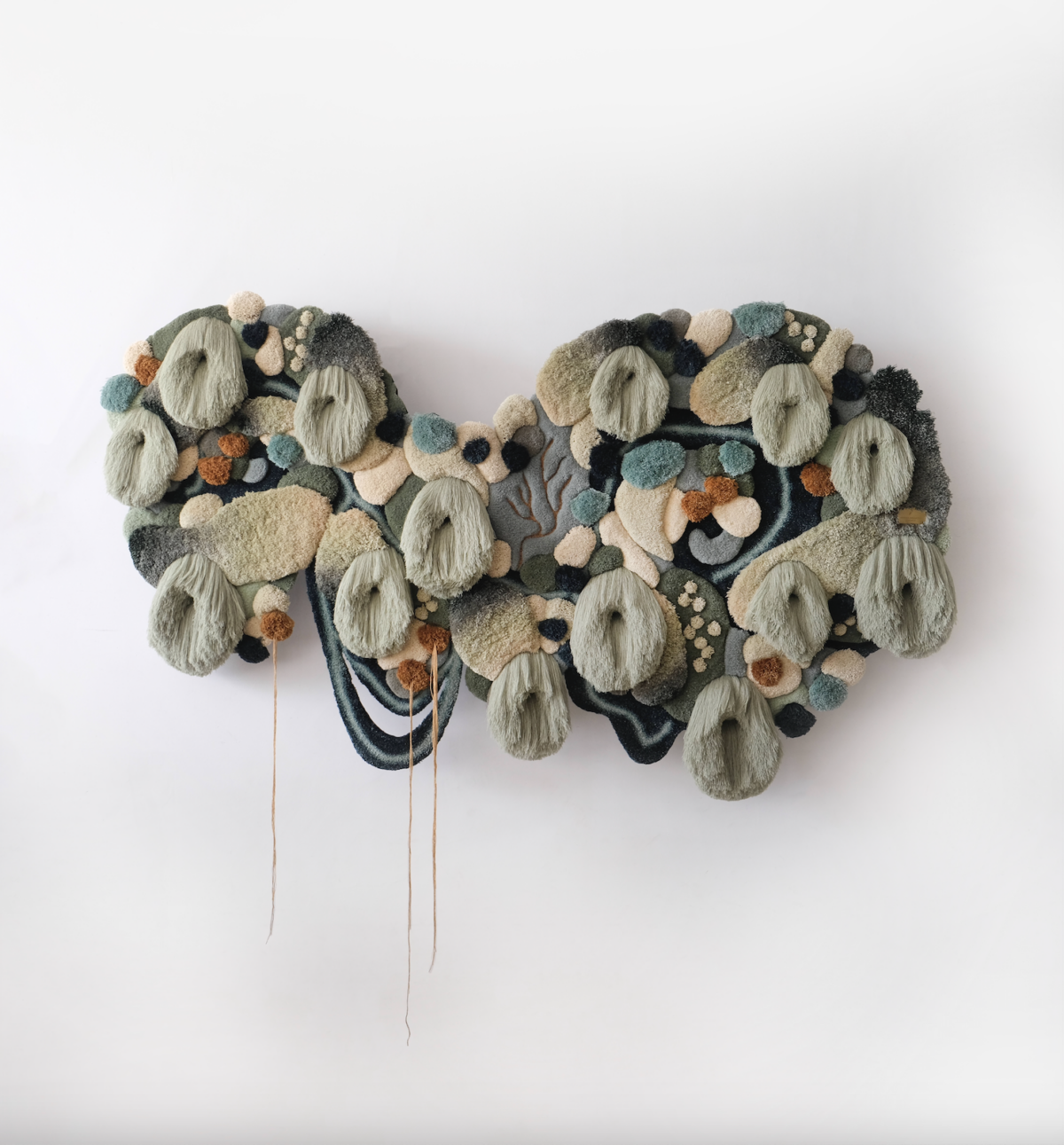Textiles are one of the oldest mediums for art, rich with a history of functionality and storytelling. From the very fiber that makes up a work, there is a story to be told, one of the land on which the fabric was made to the cultural practices that brought it into its final form. From ancient tapestries to contemporary installations of yarn strung across rooms, textile art is and has always been an emotional and tactile method of artistic expression.
Of course, “textile” is a rather vague term because of its versatility as a medium. Any fiber, thread, yarn, and fabric is a textile. The methods of converting them into art—weaving, knitting, stringing, sewing—create ever more possibilities, from repurposing and reusing fabrics and fibers for sustainable textile design to artwork that preserves cultural traditions. The final object is as much a product of craft as it is a work of art.
In any such diverse medium, there are bound to be some artists whose work goes beyond the expected, incorporating the visual and sensorial elements of the textile for an outstanding effect. In celebrating cultural diversity, examining sustainable practices, and incorporating new technologies like 3D weaving, outstanding textile artists create dynamic works full of storytelling, history, innovation, and of course beauty. Here are XX textile artists pushing the medium to inspire a more complex relationship between art, craft, culture, and tactility:
1. Do Ho Suh
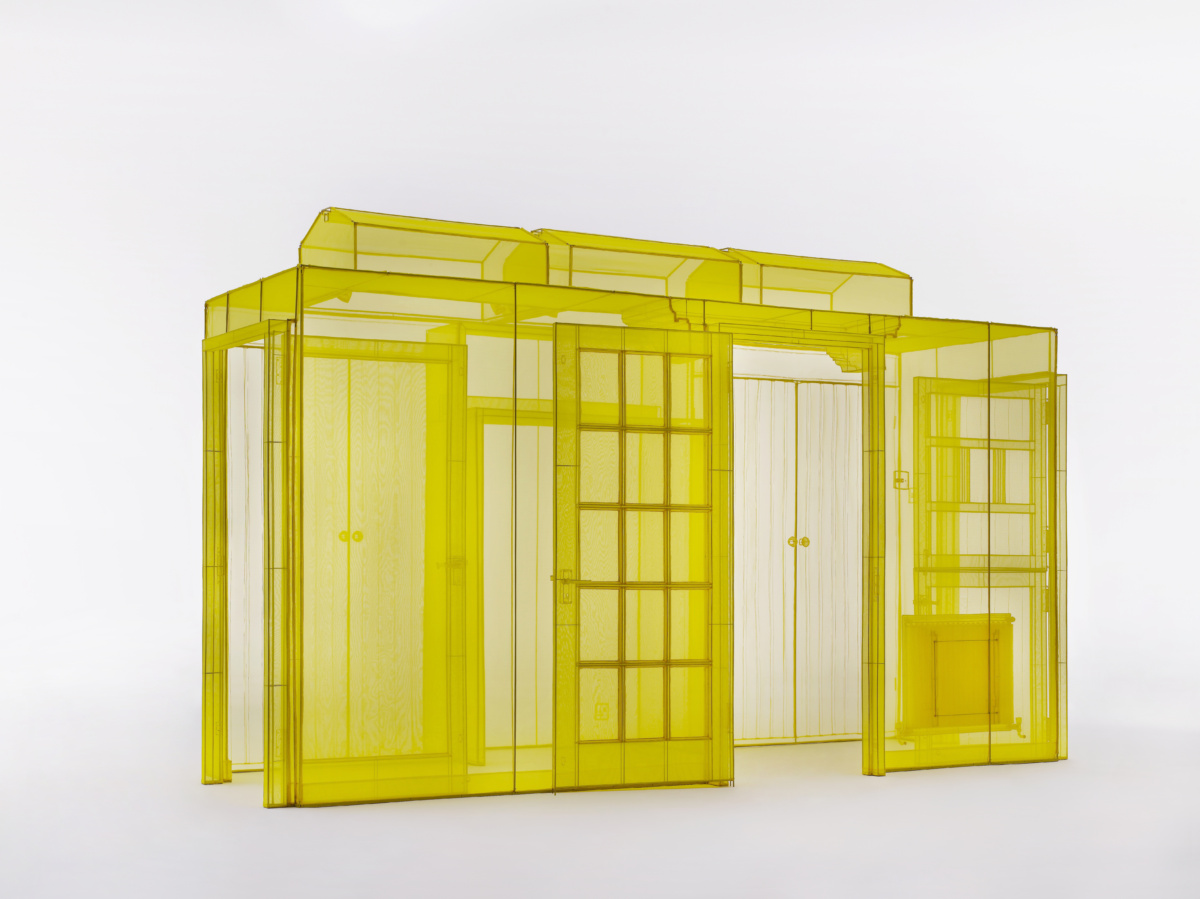
Do Ho Suh Hub-1, Kitchen Lobby, 185 Comptons Lane, Horsham, United Kingdom, 2020. Polyester fabric and stainless steel 105.28 x 79.72 x 171.77 inches © Do Ho Suh, courtesy of the artist and Lehmann Maupin, New York, Hong Kong, Seoul, and London.
Fabric becomes architecture in the work of Do Ho Suh. The Korean artist grapples with identity, displacement, and the concept of home in his installations, wherein he recreates the domestic spaces and objects in polyester and silk. The works are often replicas of real places where the artist has lived, meant to be entered and explored.
The spaces are somewhat otherworldly in the way that they are both familiar as structures with logical, real, life-size architecture—but also strange and ethereal, contained by hazy, transparent fabric walls. Do Ho Suh makes the universal search for “home,” as both a physical and metaphorical destination, into a new kind of tactile reality. He calls these works “suitcase homes,” able to be packed up and transported to the next city with ease. Do Ho Suh makes these and smaller, semi-transparent replicas of household items using traditional Korean sewing techniques and 3D modeling and mapping.
2. Sheila Hicks
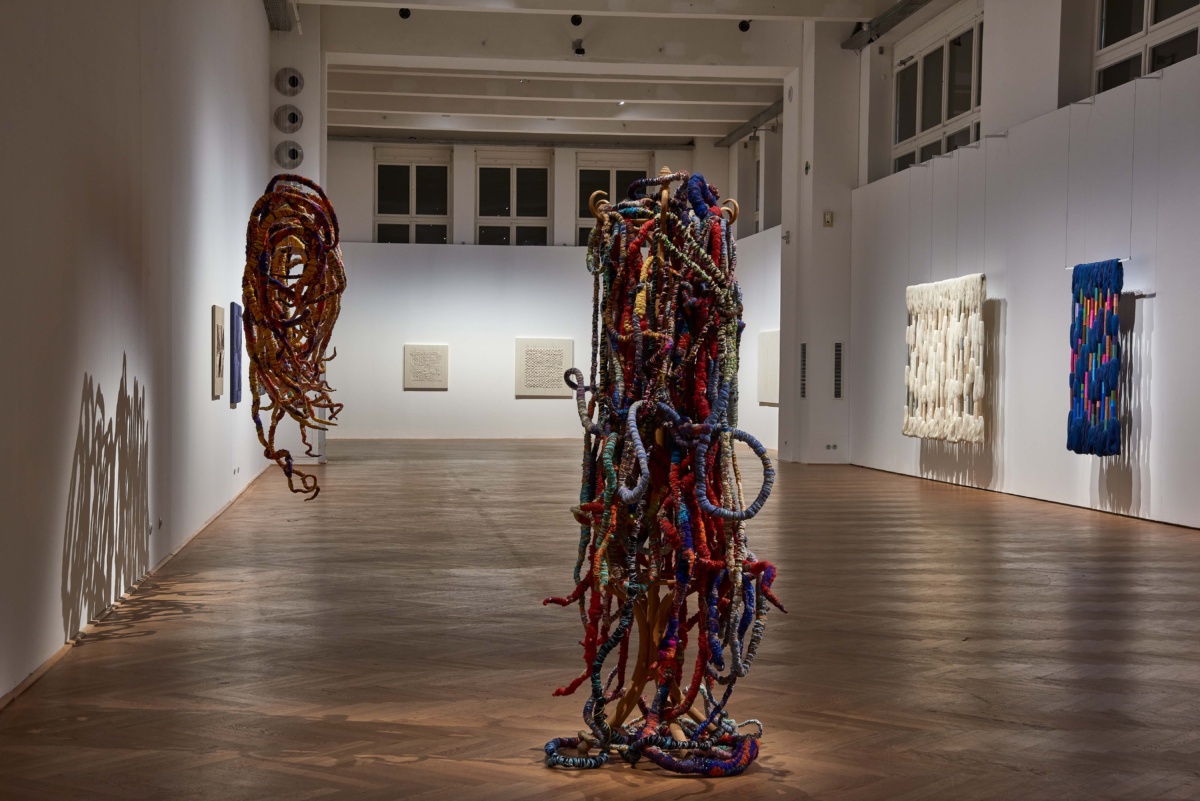
MAK Exhibition View, 2020 Sheila Hicks: Thread, Trees, River at MAK Exhibition Hall. In the front: La Caze, 2017. © Bildrecht, Vienna 2020. Photo by MAK/Georg Mayer
Studying art at Yale, Sheila Hicks was under the tutelage of Josef Albers, before receiving a Fullbright scholarship to paint in Chile. Between the color expertise of Josef Albers and the exploration of fibers in South America, one of the greatest textile artists in modern art developed her style. Sheila is known for her exploration of materials and textures, creating depth in intricate surfaces, and incorporating textile traditions and cultural heritage in large scale, spatially significant installations. Frequently she explores concepts of time and humanity in her work, inviting contemplation in spaces defined by her installations—like the 2020 exhibition at MAK in Vienna.
3. Chiharu Shiota
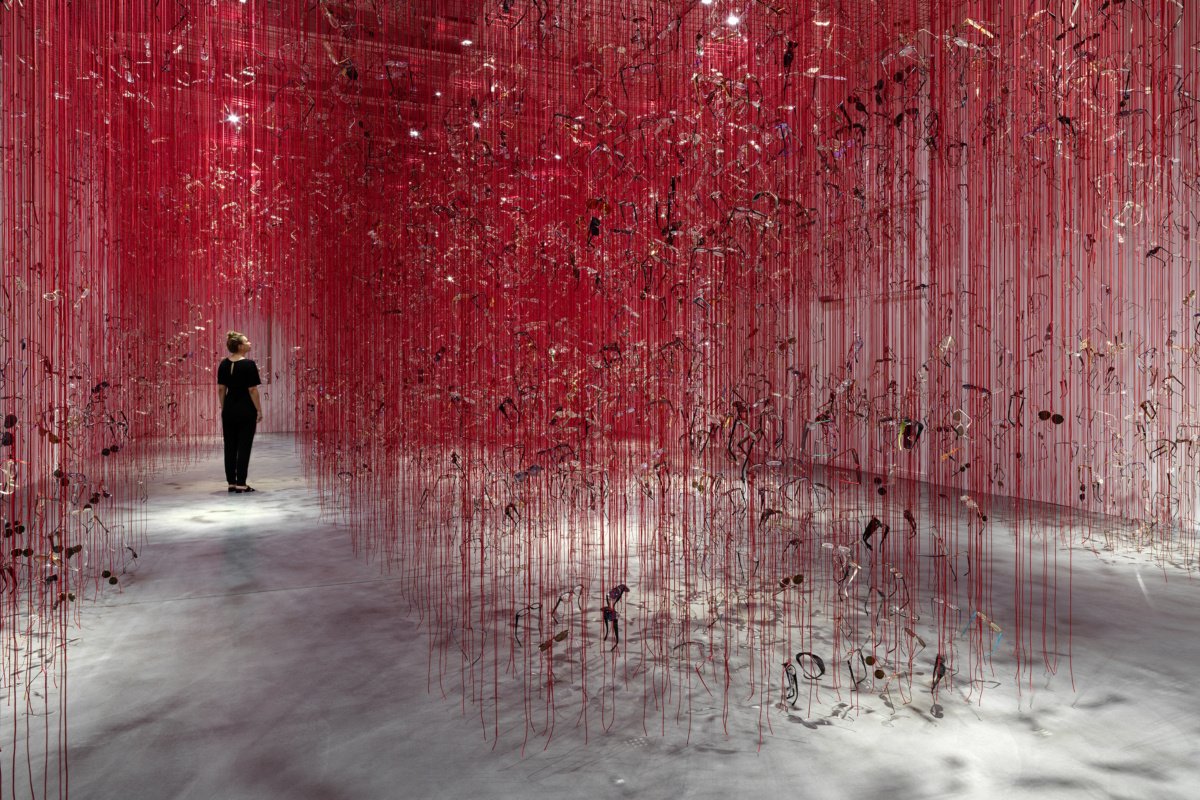
Chiharu Shiota, “Eye to Eye” (2023). Photo by Stefan Altenburger, courtesy of Haus Konstruktiv and ProLitteris, Zurich
In webs of red or white thread, Chiharu Shiota asks existential questions about life, death, love, and memory. Chiharu makes these questions feel emotionally and physically encompassing—at once awe-inspiring, swaddling, and discomfiting. Tangled in her webs are objects and remnants of life well-lived, detritus that serves to home in on the question and partial answer on hand. In the recent exhibition with Zurich’s Haus Konstructiv, “Eye to Eye,” eyeglasses are suspended from long threads, signifying the intimacy of memory. In other works, Chiharu references her own life and blood, including her struggle with cancer. Although best known for her enveloping, large-scale thread installations, she also works in drawing, sculpture, photo, and video.
4. El Anatsui

“Nukae” (2006) by El Anatsui. Courtesy of wikimedia commons.
As one of the biggest names in contemporary art, not to mention textile art, El Anatsui creates textural sculptures that tell a rich cultural history through discarded items and waste—liquor bottle caps, cassava graters, and newspapers. Reuse and transformation are at the heart of his work, alongside a love for his home continent, Africa. Based in Nsukka, Enugu, Nigeria, and Tema, Ghana, El Anatsui explores consumption, colonialism, the environment, and the passage of time, often incorporating patterns and motifs from Ghanaian and Nigerian visual traditions. El Anatsui’s tapestries are typically monumental with shimmering surfaces that invite viewers to engage with the works as the sculptures appear to change with shifting light and perspective.
5. Sanford Biggers
- Detail of “Sweven” (2022) by Sanford Biggers. Photo by Thierry Bal, courtesy of MASSIMODECARLO.
- “Sweven” (2022) by Sanford Biggers. Photo by Thierry Bal, courtesy of MASSIMODECARLO.
Sanford Biggers combines Postminimalism, Dada, Buddhist philosophy, African art, and his experiences as a Black American in his art across disciplines. Sanford incorporates a wide range of textile craft techniques to create intricate and visually striking pieces. He often repurposes found fabrics like vintage quilts or African textiles—as he did to create “Sweven.” To make the piece Sanford resurrected an antique quilt, cutting, altering, and reassembling the piece with vibrant patterns revealed behind the old quilt’s seams. In this way, Sanford adds layers of cultural and historical significance to his artwork, disrupting the quilt’s original context and function, building dialogue between past and present, and challenging viewers to reexamine collective narratives and marginalized histories.
6. Maximiliano Rosiles
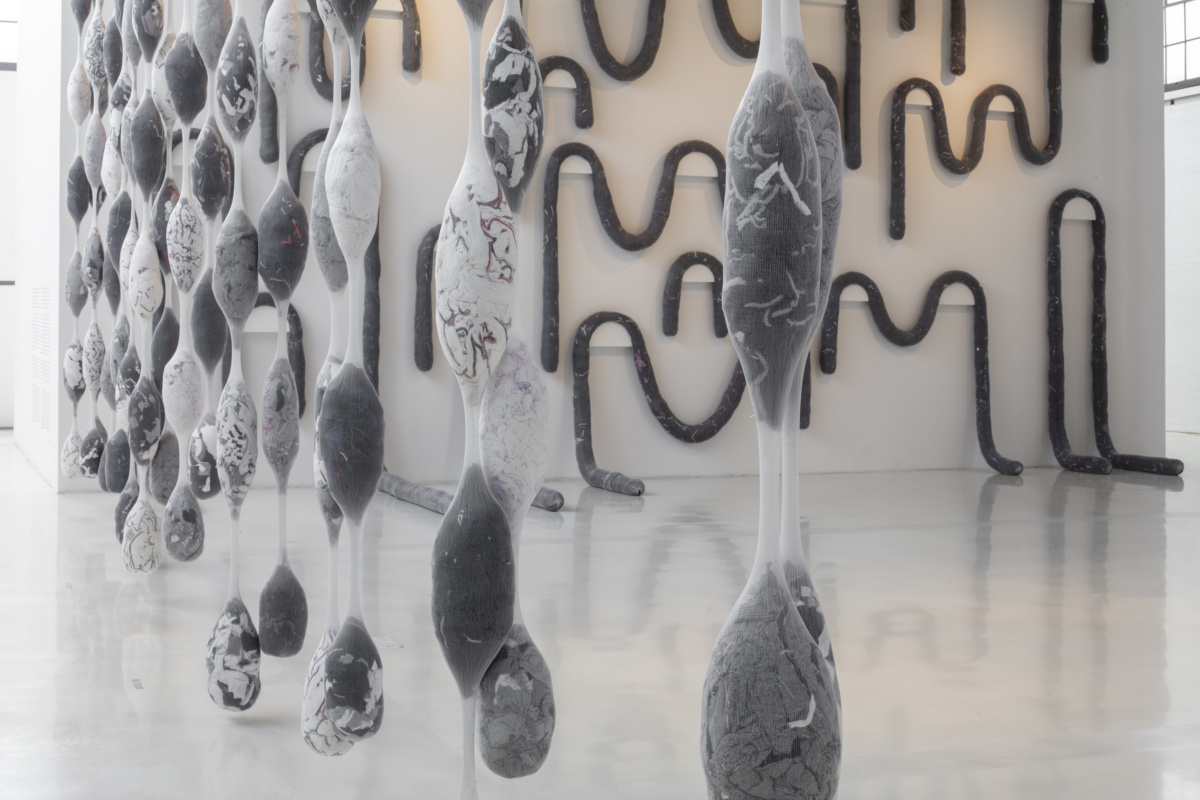
“Exuvia” (2021). Courtesy of Maximiliano Rosiles
Maximiliano Rosiles was raised between South Texas and Guanajuato, Mexico. His work reflects his own identity, in a constant state of transition, deconstruction, healing, and contradiction, as Maximiliano explores the transitory, ephemeral, and often peripheral. Textiles are not only an extremely physical way to investigate these themes, but also a way for Maximiliano to connect with his family and origins in Uriangato, Guanajuato, a region centered around its textile industry.
His work deals with topics related to labor, migration, globalization, acculturation, and the social-environmental impact of mass-production—”Exuvia,” for example, formally investigates the government’s attitude towards migrants as disposable, bodies lost in the desert. Maximiliano hangs scraps of fabrics in snakeskin-like tubes made of a knitting byproduct. The metaphorical bodies are full of weight and emotional charge, trapped in this impermanent, impersonal space between spaces.
7. Polly Apfelbaum
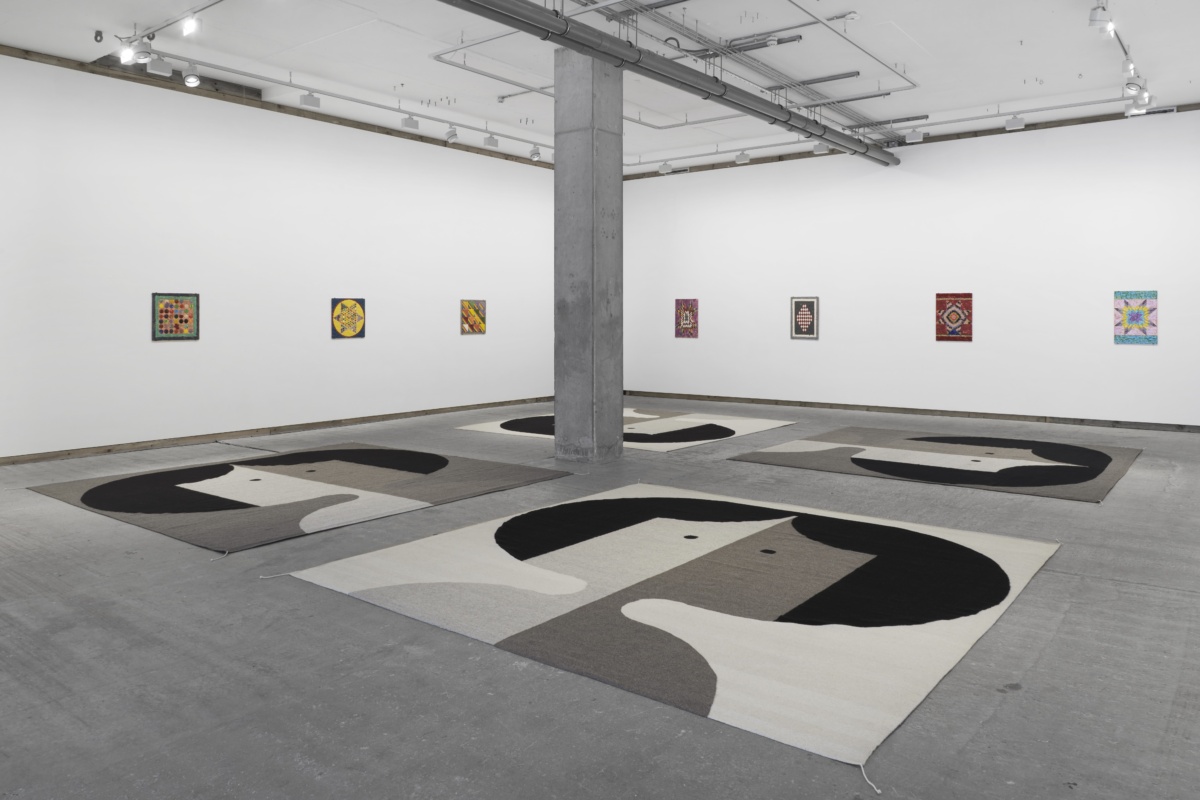
Polly Apfelbaum “These Boots Were Made for Walking” exhibition view. Courtesy of the artist and Frith Street Gallery. Photography by Ben Westoby.
Playful and experimental, Polly Apfelbaum’s textile artistry often takes the form of what she calls “fallen paintings”—vibrant textiles displayed on the floor. The informal presentation is footstep-friendly, offering a more physical interaction with the works to understand their composition and the way their arrangement affects our perception.
In the more metaphorical sense, Polly’s art is inspired by post-war American art and dapples in feminism by challenging cultural hierarchies. Her textiles as well as her ceramics are full of shapes, colors, and patterns that crucially use color and texture to manipulate the media’s original, domestic context. Spontaneity and joy are at once the anchor and aim of Polly’s practice.
8. Richard McVetis
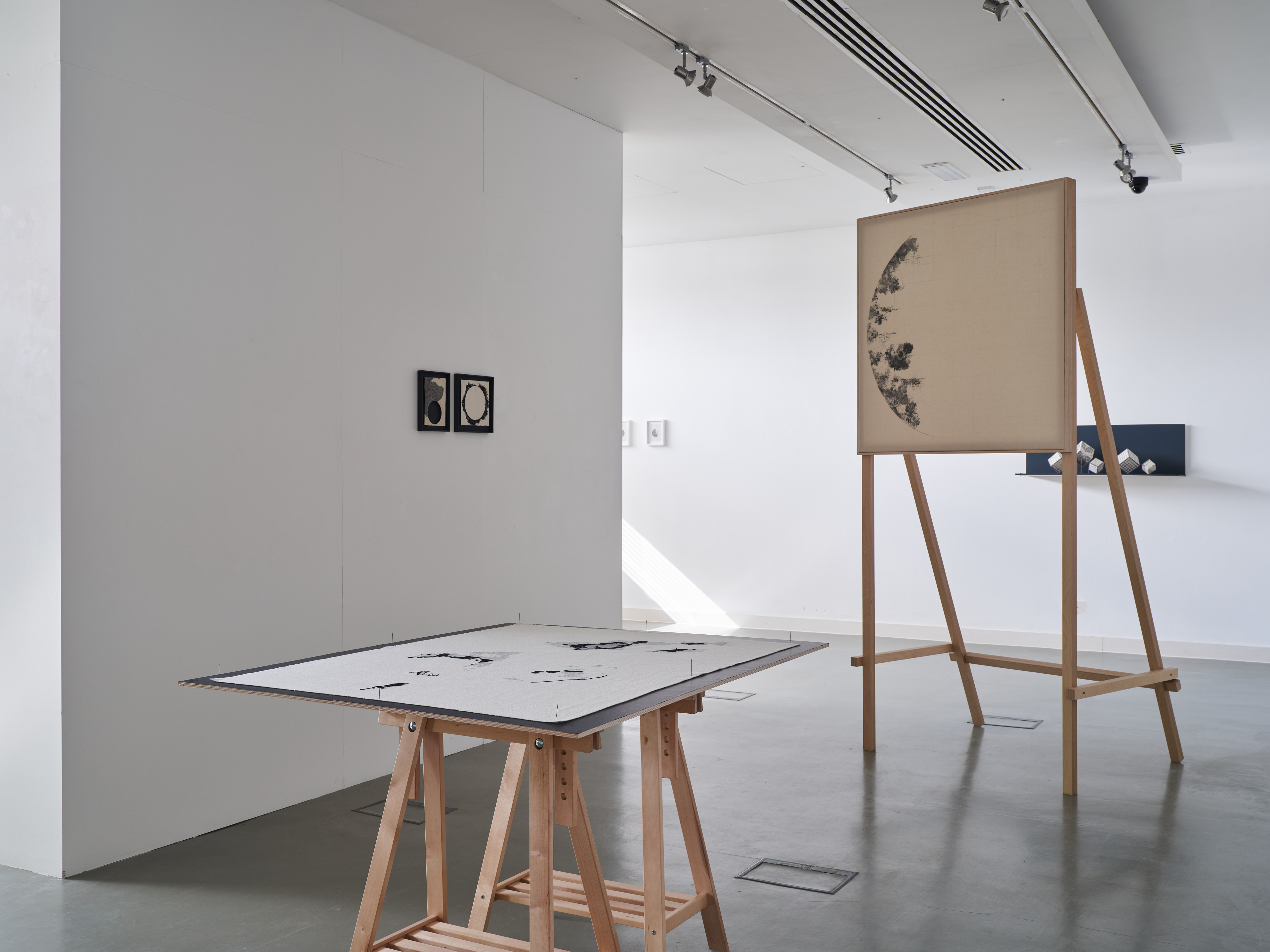
“Shaped by Time” (2022). Courtesy of Richard McVetis
Hand embroidery may have had its moment as a generic hobby, but Richard McVetis proves the intricacy and true artistic possibilities of the medium. With his meticulous cotton stitches on wool canvases, Richard records time and space in dots, lines, and crosses, resulting in shapes inspired by natural forms and geometry. As the stitches follow the hand’s path across the fabric, they track the ritual and meditative nature of making. They mark the passage of time, turning it into a physical, tangible entity—like moss growing on a tree, Richard’s hand transforms the passage of time into something physical, stitch by stitch. His solo show, “Shaped by Time,” investigates the relationship between humans and nature through the lens of time as represented in hand stitches.
9. Tanya Aguiñiga
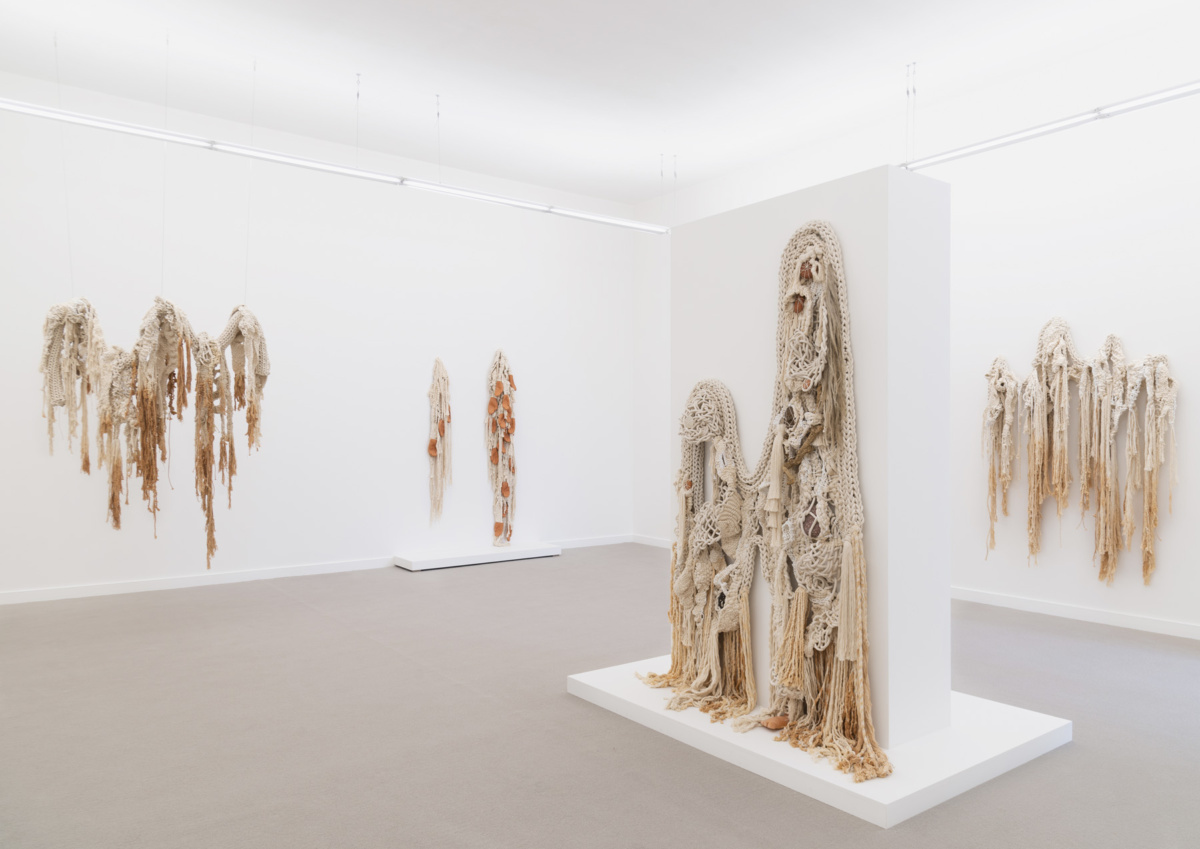
“Swallowing Dirt” (2023). Courtesy of Tanya Aguiñiga and Volume Gallery
Tanya Aguiñiga’s work revolves around traditional craft materials used to reflect elements of her upbringing between San Diego, Calif. And Tijuana, Mexico. Split between nations, her identity and experience always finds a way into her work conceptually, as her works are often rooted in activism, and in the materials and techniques she employs.
Her 2023 show with Volume Gallery in Chicago, “Swallowing Dirt,” shows a series of unconventional portraits—more like abstractions of the body. Cotton rope knots and tangles around sculpted feet, hands, organs, and other body parts. The hand-finished terra-cotta components as well as the off-loom weaving techniques call back to Tanya’s Mexican heritage, as the work as a whole aims to fill in a piece of the story of colonization, commodification, and land ownership.
10. Billie Zangewa
- Billie Zangewa, Self-Care Sunday, 2020. hand-stitched silk collage 47.64 x 25.25 inches. Courtesy of the artist and Lehmann Maupin, New York, Hong Kong, Seoul, and London
- Billie Zangewa, the dior effect, 2021. hand-stitched silk collage 53.54 x 55.12 inches. Courtesy of the artist and Lehmann Maupin, New York, Hong Kong, Seoul, and London.
Scraps of delicate raw silk come together to depict daily domestic scenes, hand-stitched by textile artist Billie Zangewa. Based in Johannesburg, South Africa, Billie’s silk masterpieces illustrate her personal experiences to challenge stereotypes and offer a more nuanced and multifaceted representation of Black women.
The intimacy and authenticity of Billie’s work involves the infusion of her own memories, from her early works contemplating the landscape of her native Botswana to her depictions of the cityscapes of Johannesburg and Paris with a lens refocused through the female gaze. She began constructing her well-known domestic scenes after the birth of her son. Billie calls her portrayals of motherhood “daily feminism,” and uses the domestic sphere to raise questions about identity, gender stereotypes, and racial prejudice.
11. Ana María Hernando
- La Tierra me canta al oído // The Earth Sings in My Ear, 2022. Tulle, metal lattice, wood, and felt165 x 24 x 6 inches at Robischon Gallery, Denver, CO. Photo by Wes Magyar, courtesy of the artist and Robischon Gallery
- Cuando bailamos, II // When We Dance, II, 2023. Tulle, wood, metal lattice, and felt 33 x 25 x 12 inches. Photo by Wes Magyar, courtesy of the artist and Elle Gallery, Zurich
Argentine-American textile artist Ana María Hernando dedicates her work to making the invisible visible, considering womens histories worldwide and their particular expertise in textiles. From embroideries of cloistered nuns in Buenos Aires to mountains of tulle to weavings from Peru, Ana María incorporates textiles in abundance, bursting through doorways and streaming from the walls. Her works often announce the craft in physical space, large, colorful, and undeniable among old buildings, city streets, and exhibition halls alike.
12. Vanessa Barragão
- “Eywa I” (2023). Courtesy of Studio Vanessa Barragão
- Detail of “Eywa I” (2023). Courtesy of Studio Vanessa Barragão
Vanessa Barragão wanted to do fashion before she discovered the handmade, traditional crafts involved with textiles. Working hard to live more sustainably and protect the natural environments that made her, Vanessa pivoted to a new medium and industry. Based in Portugal, Vanessa’s intricate tapestries are inspired by nature, and especially marine ecosystems—you can see coral reefs full of anemones in “Eywa.” Her work reflects a deep commitment to sustainability as she seeks out recycled and natural fibers to minimize her environmental footprint and works to highlight the interconnectedness of humans and the natural world. Her message is one of agency and hope in the age of climate change.
13. Gabriel Dawe
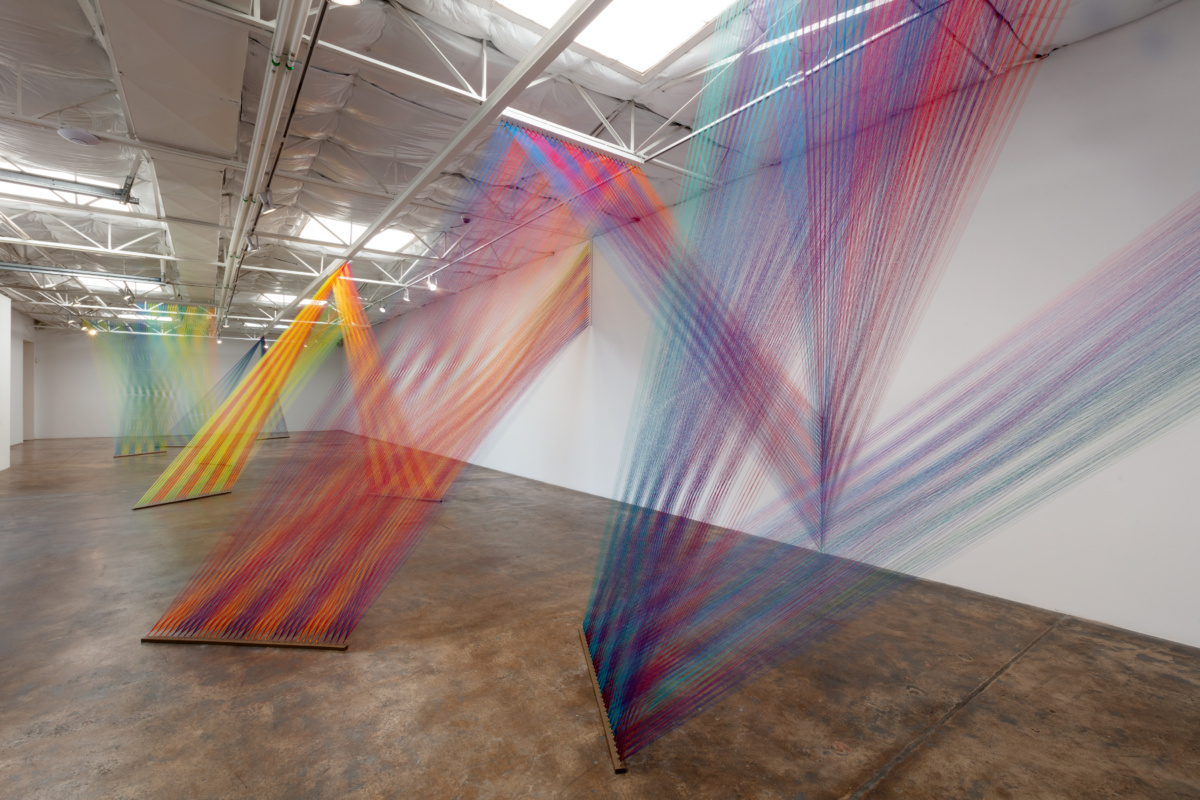
“Ode to Futility” at Talley Dunn Gallery
Photo credit Kevin Todora
Gabriel Dawe transforms space with his thread installations. Full of color, the strings cut across through space like if action movie laser beams were actually rainbows of color, and instead of intending to cause harm, they served as a reminder of human connection. Exploring light and color, Gabriel’s three-dimensional threaded structures are illusionary in the way they break up and recompose spaces with layers of bright hues. The tension of the threads allows light to diffuse among them so that the colors shift and change as you move among them, while the lightness of the threads adds to the installation’s transitory feel.
